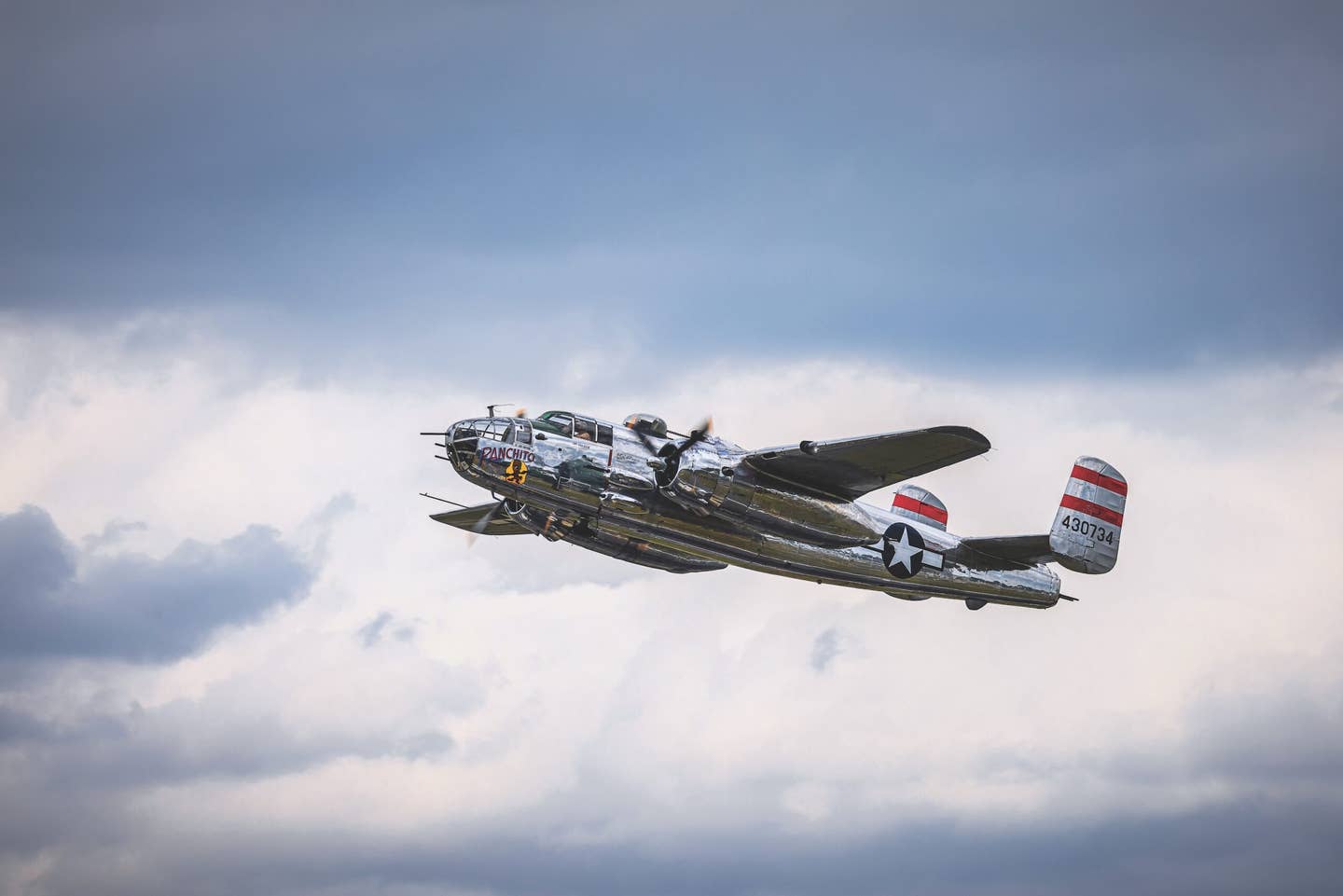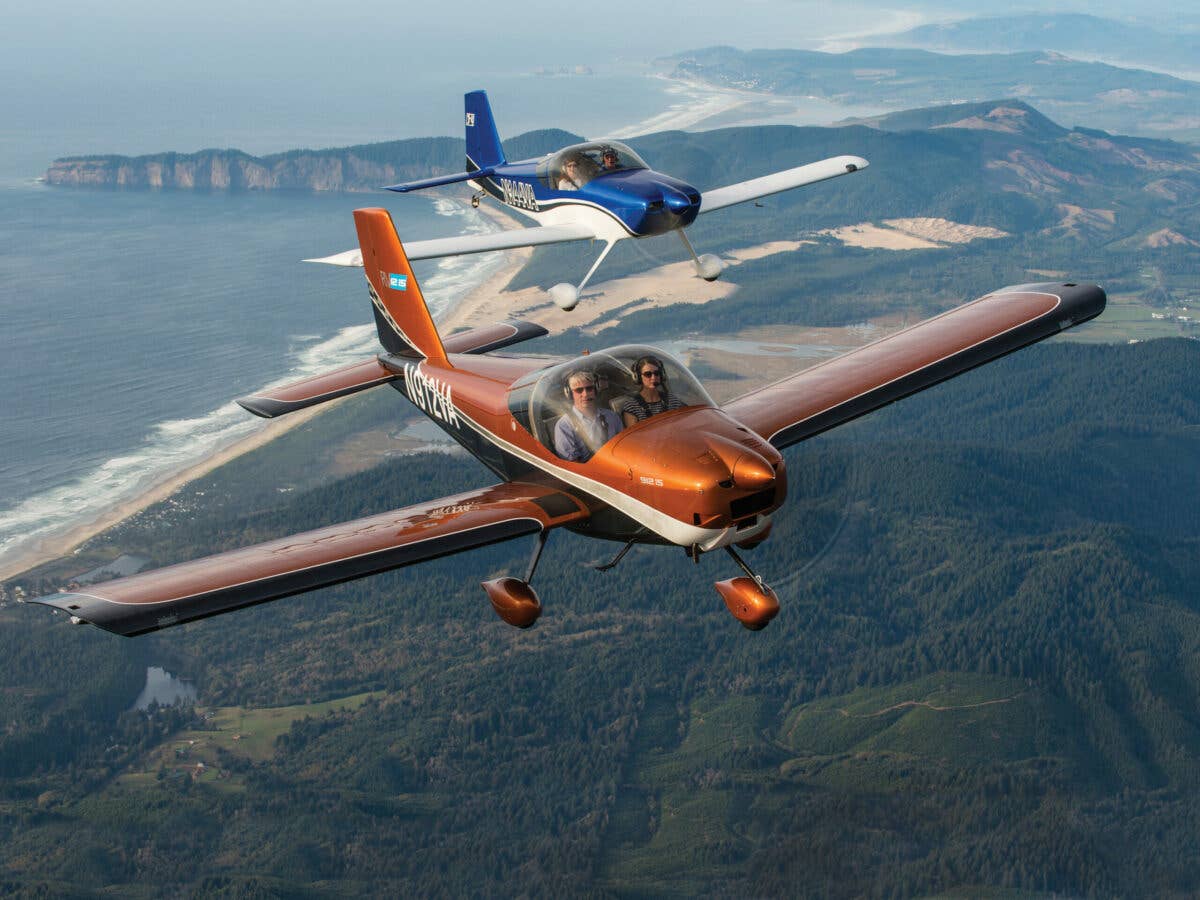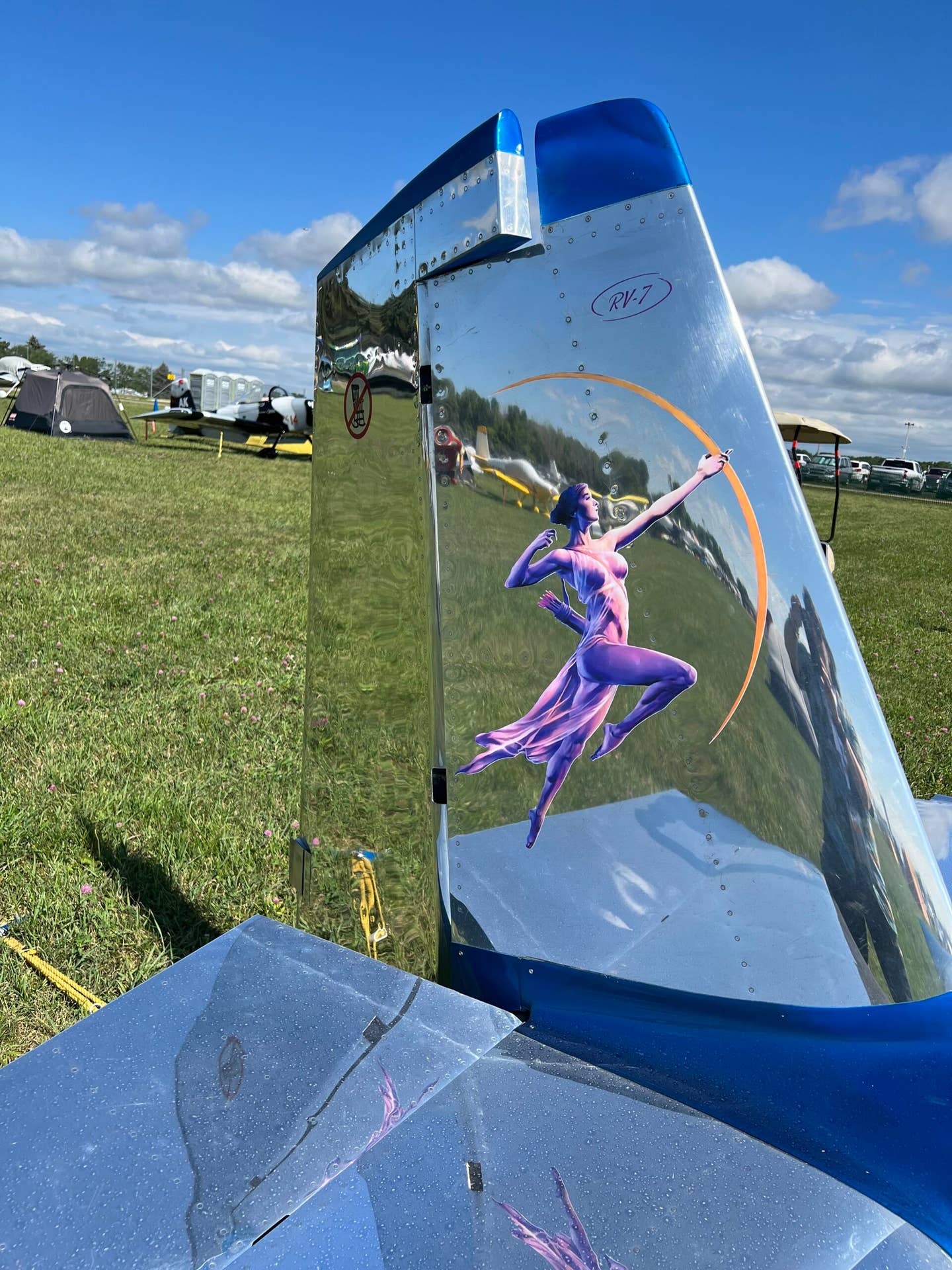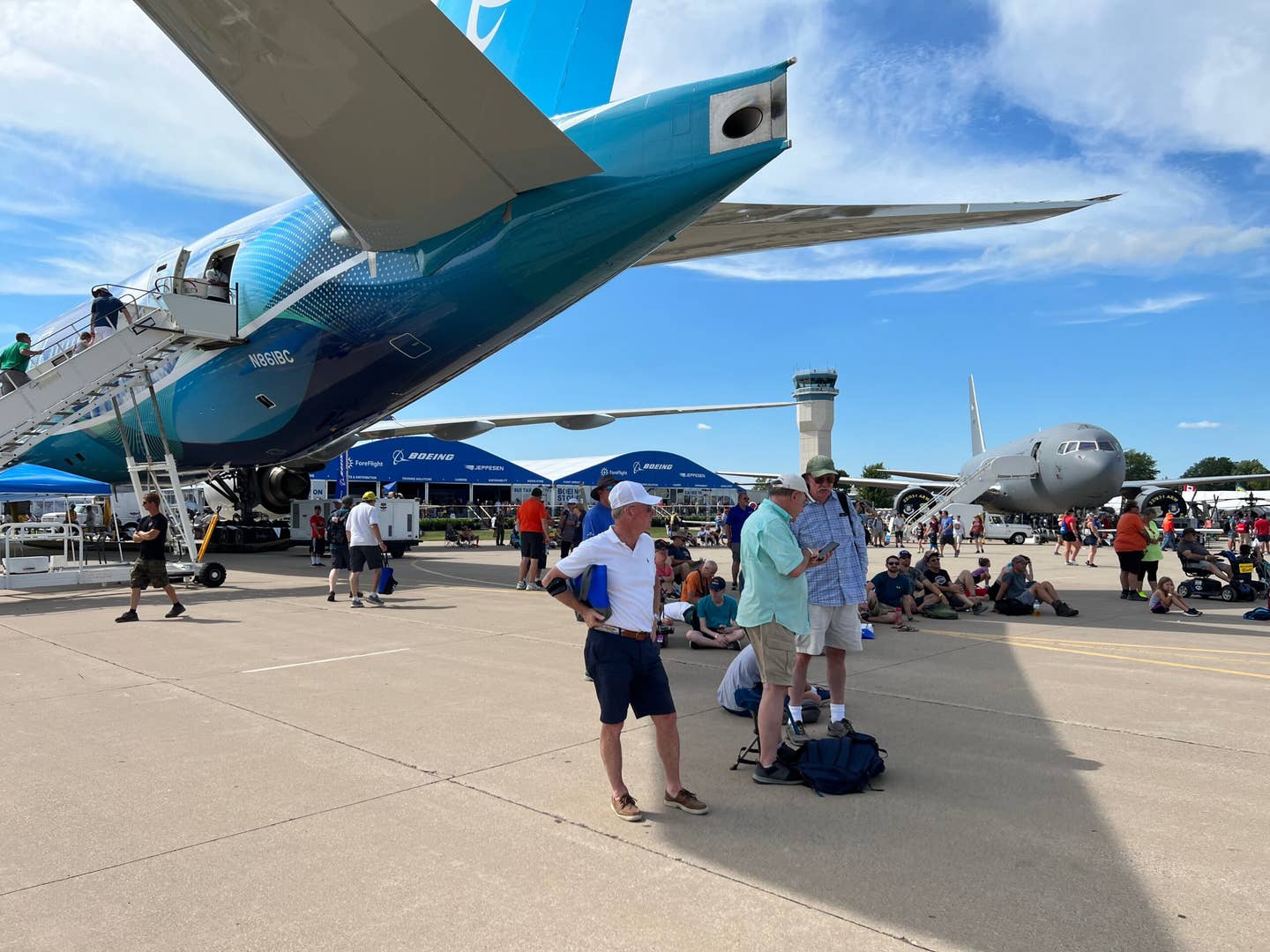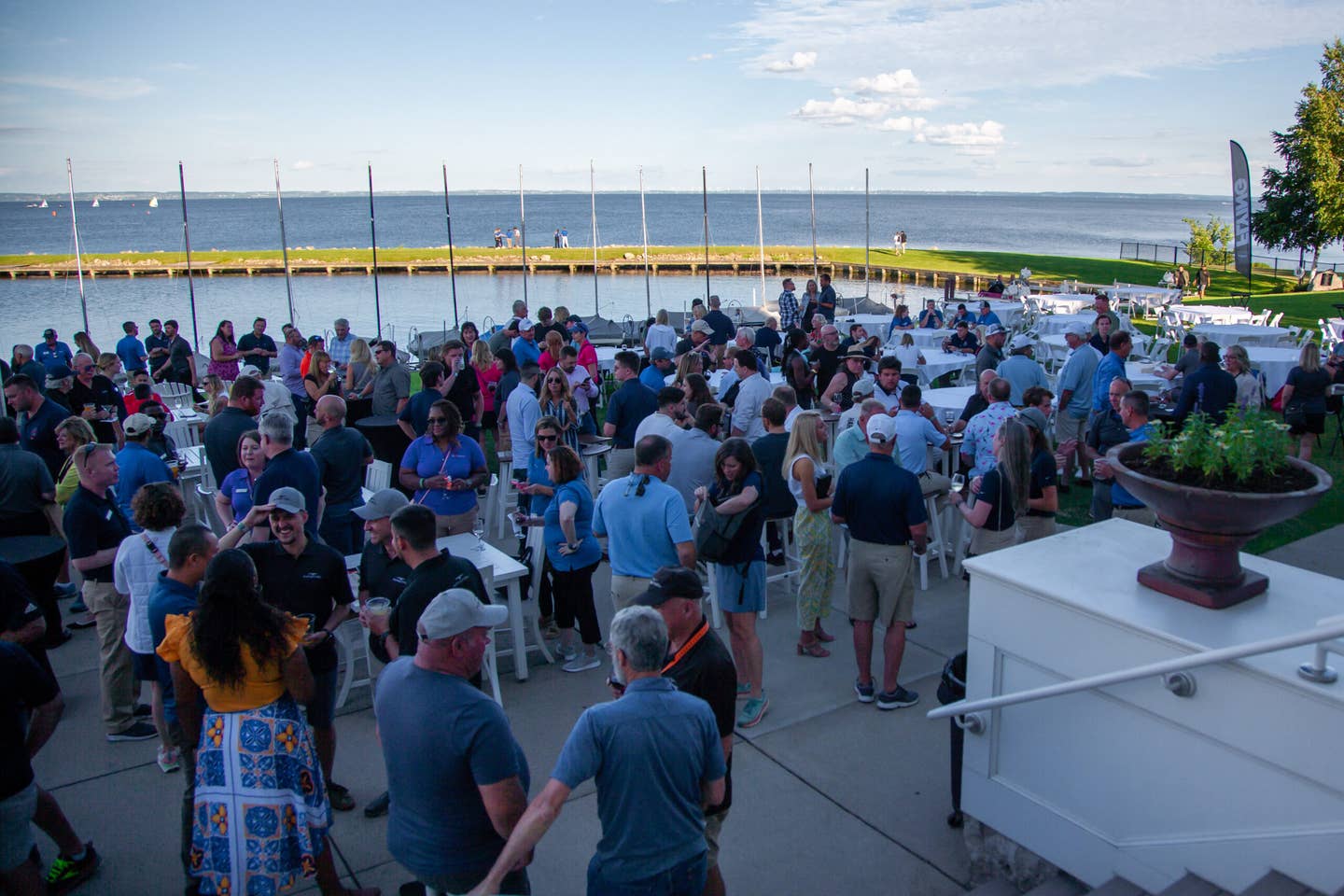
Paul Schulten thrills the beachfront crowd in his Christen Eagle. Carol Ellis
The Ocean Reef Vintage Weekend, which started in 1994, attracts dozens of vintage airplanes, cars and yachts. The collection continues to grow each year. For the first few years, only a handful of airplanes flew into the airstrip at the private Key Largo, Florida, community. For the most recent event, in early December, 2016, nearly 20 made the trip.
Aircraft ranged from several ‘40s-era planes to Placid Lassie, the C-47 transport plane that participated in D Day and Operation Market Garden, to an experimental Christen Eagle biplane that wowed the crowds. “We don’t own these airplanes as such,” says Dr. John Nordt, whose 1942 Ryan PT22 was part of this year’s event. “We’re just preserving them for future generations.”
The Vintage Weekend was also highlighted by aerobatic routines over the water at Ocean Reef Club. Read more about the planes and see them in action below.
Aircraft: 1948 Ryan L-17B
Pilot/owner: Michael Downs, Miami
Michael Downs got into vintage aircraft ownership in 2013 after purchasing his 1948 Ryan L-17B. The Navion, as the Ryan was originally known, was the first civilian aircraft made by North American Aviation, which also produced legendary military warbirds like the P-51 Mustang fighter, AT-6 Texan trainer, B-25 Mitchell bomber and F-86 Saber Jet fighter.
“Some people call it the ‘poor man’s Mustang,’” says Downs, “because it had the same wing, stabilizers and rudder as the P-51 Mustang. There are still about 1,600 flying, so it’s not an obscure aircraft.”
Downs liked the aircraft as much for its historical significance as for its design and performance.
“I love the roominess of the cabin and it also has a useful load of 1,100 pounds,” he says. “It compares very favorably to other similar-size aircraft. Plus, it looks cool.”
While attending high school in 1975, Downs obtained his pilot’s license. He rented airplanes for several years, but then a series of career moves left him without easy access to rental aircraft. In 2012, he got back into the pilot’s seat by doing a refresher course on the Cessna 172. “The school where I got checked out in Miami was so busy it was hard to rent an airplane for more than an hour,” he says. Tired of being grounded, he started looking at purchasing a 172. Then he recalled the Navions he had seen at airports near his family home in western New York. The Navion had similar performance to the 172, and there were plenty of them still flying.
When he learned that the Ryan L-17B (Ryan had acquired the Navion design in 1947) was originally designed for military use, he was sold. He located one in Washington state.
“The owner had all the paperwork to show its Air Force pedigree, which was the icing on the cake,” says Downs. “Another pilot and I flew it all the way back to Florida. It was a fantastic trip.”
Downs worked with restoration experts at Wings Over Miami Air Museum to ensure that the U.S. Air Force markings he made to his plane were historically correct, and then started to participate in airshows. He currently flies to three or four each year, including the Ocean Reef event. “I plan to hold onto it for as long as I can,” says Downs. “I love the plane, and it’s great to be back flying again.”
Aircraft: 1947 Stinson Voyager
Pilot/owner: Herk Strumpf
Among so many interesting aircraft at Vintage Weekend, Herk Strumpf’s 1947 Stinson Voyager 108-2 had an especially unusual pedigree. The Voyager has been in the Strumpf family for more than a half century, and has since become its most cherished heirloom. “That’s two and a half generations,” says Strumpf. “Of all the things that have passed through my life, the airplane has always stayed. I’m now the caretaker. I love to work on it and fly it.”
Strumpf’s father, Charlie, bought the Voyager in 1962, appreciating its “tough, roll-cage metal structure.” Strumpf, in fact, cannot recall a time without the Voyager in his life. “My parents have a photograph of me falling off the wheel pants at age one,” he says.
The harmonious lines of of the aircraft and “super-smooth” Franklin engine make it a “pleasure” to fly, according to Strumpf. He says that Stinson set the “aircraft standard” of the aviation world in the late 1940s.
“It requires a bit of attention so that you ‘aviate’ and not ‘drive’ it,” says Strumpf. “The controls are all ball-bearing. It’s not super-fast at 110 mph cruise, but considering it’ll be 70 years old in June, it’s still impressive. It’s hard to argue with a two-door, four-seat, high-wing classic that is also very comfortable.”
Strumpf attends about a half-dozen airshows each year with the family heirloom, along with his 1964 Cherokee 235. “Insanity is defined by trying to keep two aircraft airworthy and flyable at all times,” he notes.
Aircraft: Emigh Trojan
Pilot/owner: Sam Lauff
Sam Lauff is a longtime collector who has owned a series of vintage aircraft in his flying career. He now owns three airplanes manufactured before 1951, but the one that draws the most attention at the air shows is the Emigh Trojan. Designed and built by Harold Emigh from 1946 to 1950, his Trojan A-2 is what Lauff calls unique and rare among vintage aircraft. Only 58 A-2s were built as personal transportation aircraft. There are 22 on the FAA registry, but fewer than five are still flying.
“Its curb appeal always draws attention since most people have never seen one,” says Lauff. “It was an unusual example of an early general aviation aircraft that incorporates so many nonstandard construction techniques.” The Trojan A-2 has many interchangeable parts that were designed to lower manufacturing costs and be interchangeable with other Emigh aircraft. The external wing ribs, magnesium gear and engine mount were all nonstandard, but all control surfaces, empennage, and even the upper and lower fuselage skins were interchangeable.
Lauff says the Trojan A-2’s flying characteristics are quite challenging. “That includes the stall configuration,” he notes. “There is no imminent stall warning prior to the break, when the left wing drops dramatically. It also has a tendency to pitch up on takeoff. It has one brake pedal for both wheels. You need to constantly fly the airplane.”
Aircraft: 1948 Cessna 195 N3485V
Owner/pilot: Ron Gruner
Ron Gruner had been flying gliders for 15 years before he purchased his 1948 Cessna 195 in 1989. “At first, I was looking for a Cessna 170,” says Gruner. “Then a friend suggested the Cessna 195. It’s a classic airplane that, in my opinion, is one of the most beautiful ever built.”
Gruner has put three engines into his 195 and has logged about 2000 hours of flight time. “The plane’s very efficient. You can fly 165 mph at 13 gph,” he says. “We’ve often flown from Boston to Florida and can do it comfortably in two stops.” Gruner has also flown his beloved Cessna from Massachusetts to California, taking the southern route through Texas.
Now retired, Gruner and his Cessna 195 can often be found flying into local business airports around Florida. “One of the things I like about most small airports in Florida is that many have really great restaurants, so we can fly out to lunch with friends in their airplanes and be home a few hours later,” he says. Gruner, who has participated in several Vintage Weekend events, also flies in other air shows around Florida.
Aircraft: 1972 CJ-6A
Owner/pilot: Sam Sax
The Vintage Weekend collection was not limited to historical American aircraft. Sam Sax exhibited his 1972 Nanchang CJ-6A at the event, noting that some aircraft historians confuse it with the Russian Yak 18. “This was the first indigenous aircraft design for the Chinese military,” notes Sax. “It shares some of the internal systems and engine design with the Yak, but the airframe is an original Chinese design.”
Sax bought his CJ-6A in 1997 after a friend who owned one took him for a ride. It was stable yet highly maneuverable. “I was smitten and had to have one,” says Sax, referring the airplane as his “first and only vintage mistress.”
The Nanchang served as the primary trainer for the Chinese air force through the 1980s, with aircraft production running for about 30 years. “The Chinese retired these from service after only 4,000 hours of airframe time, so there’s a lot more useful life in them,” says Sax. “They eventually became available in the U.S. and most of the new American owners restored them to U.S. standards. We’ve enjoyed years of fun and affordable flying.”
Sax upgraded the original 285-hp Chinese engine to a Russian 360-hp M-14P, and added a Whirlwind 3 blade propeller. That made a huge difference in climb and acrobatics performance.
“The plane has great control-stick balance,” says Sax. “It delivers equally smooth control-stick movement/pressure for both elevator and ailerons. It’s a simple airplane to fly, with low maintenance costs.”
His only regret about the Nanchang CJ-6A’s original design? “I wish it were a taildragger,” he says. This was Sax’s seventh time at Vintage Weekend.
Aircraft: 1978 Great Lakes 2T-12-2 Biplane
Pilot/Owner: Jeff Edwards
Jeff Edwards made his second appearance at Ocean Reef flying his Great Lakes 2T-12-2 biplane. A replica of the original Great Lakes Sport Trainer, built in Cleveland from 1929 to 1932, Edwards’ 2T-12-2 was in the last run of the 100 that were built between 1972 and 1980. The new Great Lakes firm was based in Wichita, Kansas, with its assembly facilities in Oklahoma.
To say Edwards is an enthusiast is an understatement. He bought the biplane in 1989 with 440 hours on it. It now has over 4,000 hours.
“I’ve flown it to the National Biplane Fly-In over 15 times, which is about 1,000 miles,” he says. “We’ve also made numerous trips to Oshkosh for the fly-in there.”
His biggest adventure came just before Vintage Weekend, where he and his fiancee, Jennifer, did a 40-day barnstorming adventure from Florida to Seattle and down the California coast, across much of the southwest, and back to Daytona. Besides the stunning coastal and Southwest desert scenery, one of the trip’s most memorable days was Jeff and Jennifer flying into in Las Vegas to be married by Elvis and Marilyn Monroe.
The Great Lakes is the only aircraft that Edwards has ever owned. “You might say I got it right the first time,” he says. “I love that it can do all the acrobatic maneuvers, thanks to its inverted fuel and oil systems. My least favorite feature is the lack of cargo space. My wife and I traveled on that trip with just a knapsack for clothing.”
Edwards continues to participate in airshows, including weekly formation flyovers of his airport at Spruce Creek Airport Fly-in in Daytona Beach, Florida. His 2T-12-2 has won awards for Best Modern Open Cockpit Biplane four years in a row. For a look at his cross-country trip, go to biplanebarnstorming.blogspot.com.
Aircraft: 1950 North American T-6G Airshow
Pilot: Gene McNeely
At 76, you wouldn’t expect many pilots to be racing planes. Gene McNeely is not your typical pilot. McNeely was one of the top guns at Vintage Weekend. His barrel rolls, dives and other aerobatics were the stuff of oohs and aahs during the airshow. But then Gene McNeely does this for a living as the slot pilot of the Aeroshell Aerobatic Team (naat.net).
McNeely got his commercial pilot’s license as soon as he got out of the Navy in the 1960s, and never left the cockpit of a plane. He had a crop-dusting business and cargo business, flying DC-3s and Beech 18s. Now, he keeps his flight skills sharp with dozens of airshows and the Reno Air Races each year. His son Greg, whose T-6 Texan Gene flew at Vintage Weekend, flew the Honda Race team’s 1950 AT6 at 241 mph at the Reno Races.
The six-member Aeroshell team, which owns four identically marked T-6s, has been displaying its prowess for 25 years.
The T-6 served as a military training plane from WWII until the 1970s. “It was called the ‘pilot-maker,’” says McNeely. “There was a pilot in front and instructor in back. It had guns and bombs on it, and when he learned to shoot, he was assigned a single-sea trainer. They were advanced trainers for Mustangs or Corsairs.” There are approximately 400 still in operation.
McNeely calls the T-6 a “poor man’s warbird,” since the acquisition and maintenance costs remain reasonable compared to many other vintage military aircraft. McNeely and the Aeroshell team participate in about 25 events each year.
Aircraft: American Champion Super Decathalon
Pilot/Owner: John Black
John Black grew up in Dayton, Ohio, the same community that produced the Wright Brothers. Black gained his pilot’s license before he completed high school. “My first aerobatic lesson was in a Super Decathlon before I had my private license,” he says. “I still remember my first time upside down like it was yesterday."
After earning a degree in aircraft engineering at Embry-Riddle Aeronautical University, Black was commissioned in the U.S. Air Force and, for 20 years, flew F-15As and F-15Cs. He eventually retired as a lieutenant colonel, having amassed 3,600 hours of Eagle Time.
Now 50, Black has been doing aerobatics in his 1996 American Champion Decathlon in airshows since he bought it in 2002. "What a great airplane," he says about Blue, named after its sky-blue color. "It is such a graceful flying aircraft. The only thing I don't like is that we can only stay upside down for three minutes at a time."
Though Blue is the only aircraft Black has ever owned, he has flown over 60 types of aircraft in the last 33 years, amounting to 7,100 hours and more than 6,700 sorties. He flies P-51 Mustangs and Waco UPF-7s on a regular basis. "I always tell people that if I'm not flying the Mustang or the Waco, you can find me at the airport tinkering with the Decathlon," he says.
Aircraft: 1970 Waco UPF-7
Owner/Pilot: David Baldwin
David Baldwin and his wife, Diana, flew with Jeff and Jennifer Edwards in their Great Lakes 2T-12-2 on the bucket-list adventure of a lifetime a few months before Vintage Weekend.
They traveled more than 8,000 miles over 41 days, from their home at Spruce Creek Fly-In in Daytona Beach, Florida. The six-week, cross-country trip proceeded from Spruce Creek into the heart of the American Southwest, with stops at Lake Powell; Texas; Santa Fe, New Mexico; and California, through the central valley to Washington state, back down the coast to Catalina Island, and then to Las Vegas (where Jeff and Jennifer got married). Nearly every day, the adventurers were treated to some of the country’s most scenic sights — Sedona, Monument Valley, Catalina, Half Moon Bay —from open cockpits. The adventure is chronicled on biplanebarnstorming.blogspot.com.
Baldwin, who is both a flight instructor and an A&P/IA-certified mechanic, has owned multiple aircraft over the years, but said that about 10 years ago he wanted “a big, old biplane.” The Waco UPF-7 was originally a World War II training airplane that had been converted to a ride airplane and fit the bill.
“We quickly learned the pleasant surprise that an antique open-cockpit plane provides you when you land,” says Baldwin. “On our trip, we got the VIP treatment. We met wonderful people along the way. It’s definitely the best way to fly.”
Aircraft: 1942 Ryan PT22
Owner/Pilot: Dr. John Nordt
Dr. John Nordt bought his Ryan PT22 in 1985, following the example of his father who had owned and flown the same airplane toward the end of World War II. The PT22 served as a military training aircraft during WWII, along with the Stearman Kaydet and Fairchild Cornell. The PT22 Recruit, however, was considered a superior training aircraft because it was more demanding and less forgiving than the others.
In his 31 years flying the Ryan PT22, Nordt says it has been “very unique and a lot of fun,” adding that it’s a “pilot’s airplane."
“Some people mistake it as an easy-to-fly airplane because it’s small. You have to remember that it was designed to train guys to fly fighter planes, so it’s capable of 9G positive and 6G negative,” he says. “It’s like flying a Harley at 1,000 feet. I just thoroughly enjoy flying it.”
Nordt, the third owner, has about 700 hours on the plane and has put three engines into it. A South Florida resident, he has been involved with the Wings Over Miami airplane museum for several decades, which has one of the country’s best vintage airplane collections. Nordt is also a member of the International Ryan Club, which represents the 50 to 100 Ryans still flying.
Nordt brought his PT22 to the first Vintage Weekend the early ‘90s, and has attended every year. “There were four or five aircraft at the first show,” he says. “Now it’s gotten so large that we have an airshow every year. The interest among vintage owners is very high.”
Nordt’s PT22 has won multiple awards over the years, including Judge’s Choice at Vintage Weekend and an EAA event in Lakeland, Florida. It also won this year’s award for best open cockpit trainer.
Aircraft: 1968 OV-1B Mohawk
Owner/Pilot: Dr. Joe Masessa
One of the most fascinating and — emotionally moving — airplanes at Vintage Weekend was the 1968 Grumman OV-1D Mohawk. Its aggressive look, massive turbine engines and protruding cockpit were all head-turners, but the real draw were the 1,626 names inscribed on the outside. They were the names of the U.S. servicemen still missing in action from the Vietnam War.
Dr. Joseph Masessa, who bought the Vietnam-era Mohawk in 2008, decided to put the names of the MIA on the aircraft as a flying memorial to those who were left behind. “They fought for us,” he says. “We’re now trying to fight for them and show that they were not forgotten. I’ve had people come up to me at the airshows and say that’s their next-door neighbor or a cousin. This humanizes these people.”
Masessa dreamed of being an astronaut as a child and earned his aircraft license in high school. He eventually attended medical school and opened a practice in dermatological surgery. After med school, Masessa gained advanced pilot ratings and eventually bought a Piper Cheyenne II turboprop. He used the Cheyenne to shuttle between his offices in New Jersey, South Carolina and West Palm Beach, Florida. In 2013, he bought a Citation 501SP, flying 750 hours in its first two years of service.
While Masessa’s other aircraft were for business, the Mohawk became his love. “The pedigree of the Mohawk is amazing,” he says.
The first OA-1 went into service in 1959, saw service in Vietnam and was active as a warbird through the first Gulf War. It was eventually retired in 1996. Designed with exceptional short-field landing capabilities, the Mohawk served as observation and attack aircraft. In Vietnam, the Mohawk operated out of rough airstrips in advanced locations, using radar and cameras to bring back intelligence to battlefield commanders.
Masessa first saw the Mohawk at an airshow in Teterboro, New Jersey.
“I saw it and thought to myself ‘what’s that?” he says, taken aback by the unusual look.
The Mohawk he found had very few hours, but it had also been sitting outside a hangar in Ogden, Utah, for five years. “It had been used mainly for training and had very few hours after it was retired into civilian life,” says Masessa. “It took a lot of time and money to overhaul it, but we’ve brought it back to life.” He acquired the type rating in 2008.
At first, Masessa showed it at static exhibitions in airshows. Eventually, he gained aerobatic certification so he could show its flight capabilities to the public. “It was designed to do a lot of low-level maneuvers, but it feels sturdy and stable,” he says. “The engines are phenomenal, the same Lycoming T53s on Huey military helicopters. It’s also a unique feeling to sit 3 feet from the nose. I love flying it.”
Masessa said he will continue to own the aircraft as long as there are MIA names on the fuselage. Each time the remains of an MIA serviceman returns home, an American flag is placed beside the name. He sees a mission in bringing awareness to the public about the MIA issue through exposure in airshows. “We will not stop flying until every man and woman is accounted for,” he says.
The list of upcoming airshows that the Mohawk will attend is at mohawkairshows.com.
Aircraft: 1942 C-47 Placid Lassie
Pilot: Dick Osborne, John Grones, Shawn Knickerbocker
Placid Lassie probably had the most enthusiastic following of any aircraft at Vintage Weekend.
The C-47, built in Long Beach, California, in 1942 and delivered a year later to Aldermaston Air Base in southern England, participated not only in the D-Day invasion but also Operation Market Garden.
On June 6, 1944, the Dakota (as the C-47s were nicknamed) dropped paratroopers directly into the battlefield at Normandy and then towed a Waco CG4A glider across the Channel at night. In September 1944, the aircraft was part of Operation Market Garden, a failed attempt to liberate Holland from the Nazis. In December, the C-47 dropped paratroopers and supplies into the besieged city of Bastogne. After her illustrious career, Placid Lassie returned to the U.S. and was used as an air-cargo carrier. In 2005, it was purchased by James Lyle, who oversaw a historically accurate restoration back to the 74th TCS squadron with the aircraft's olive-drab USAAF D-Day colors.
Placid Lassie has participated in many airshows and celebrations, including a D-Day commemoration in England in 2014.
The three pilots flying it at Vintage Weekend, Dick Osborne, John Grones and Shawn Knickerbocker, have also been part of the extended team that has helped with its restoration.
Aircraft: Christen Eagle
Owner/Pilot: Paul Schulten
Flying his 2002 Christen Eagle with gravity-defying displays of aerobatics, Paul Schulten was the star of the Vintage Weekend Air Show. A Southwest Airlines commercial pilot by day, Schulten has flown since the age of 19, with over 20,000 hours of flight time in aircraft ranging from gliders to most general aviation planes and many business jets to the DC-3, 737 and DC-9.
Schulten’s experimental category Eagle was built by Pete Gnaedinger of Glide Aero in 2001. Gnaedinger also built the Eagles Aerobatic Team’s Eagles that captivated the general public from 1979 through 2005.
Schulten’s Eagle has a steel frame fuselage with wood-wing spars and fabric-covered wings and tail surfaces. The Lycoming AEIO360 engine produces 230 HP while turning a three-blade MT aerobatic prop. It is painted in the classic Christen Eagle nine-color “feather” paint scheme.
During the show, Schulten did aerobatic sequences that produced forces of +5 to -4G. His airspeeds ranged from 220 to zero mph as he wowed the crowd. He routinely performs at airshows around the Southeastern United States. The schedule is on Eagleairshow.com

Sign-up for newsletters & special offers!
Get the latest FLYING stories & special offers delivered directly to your inbox

